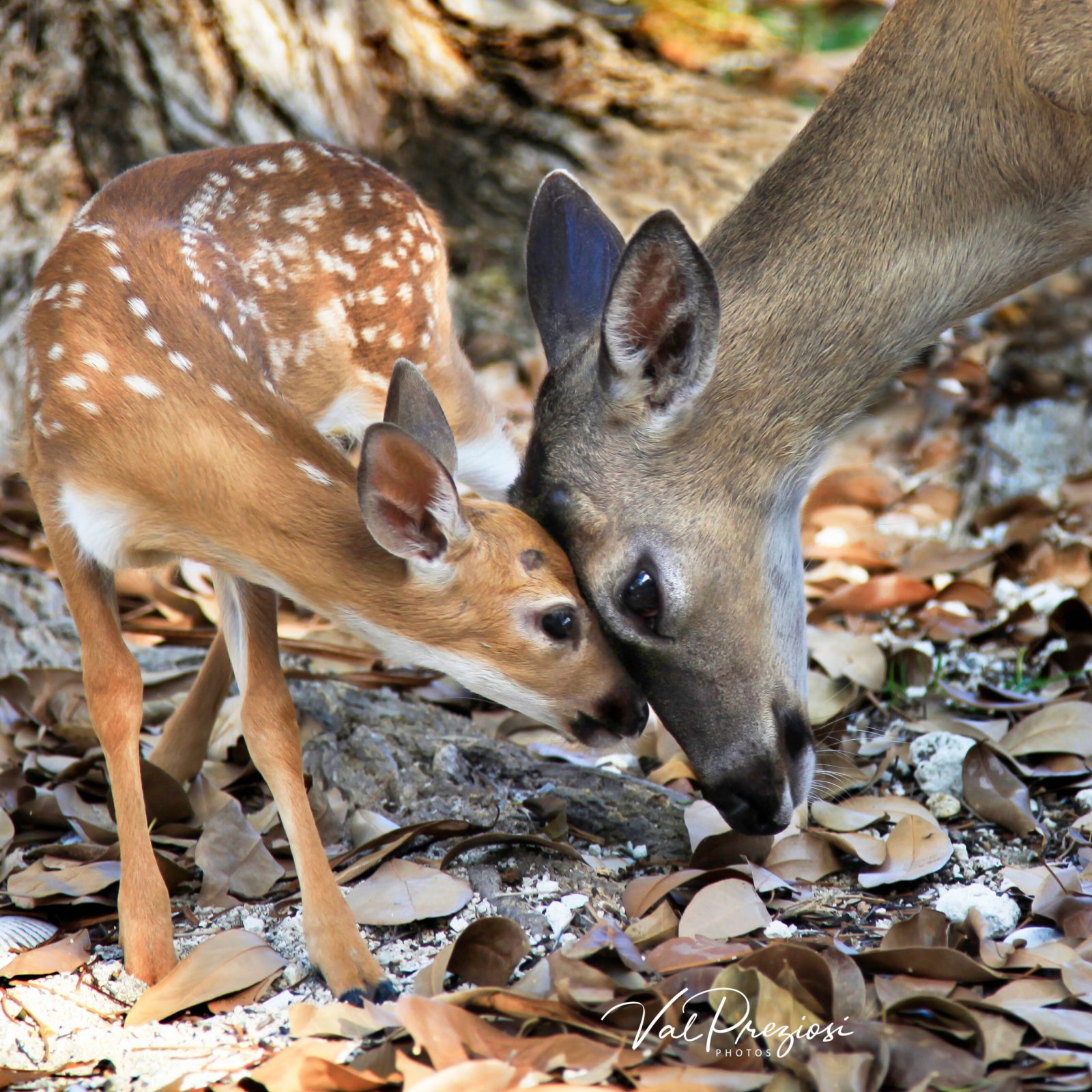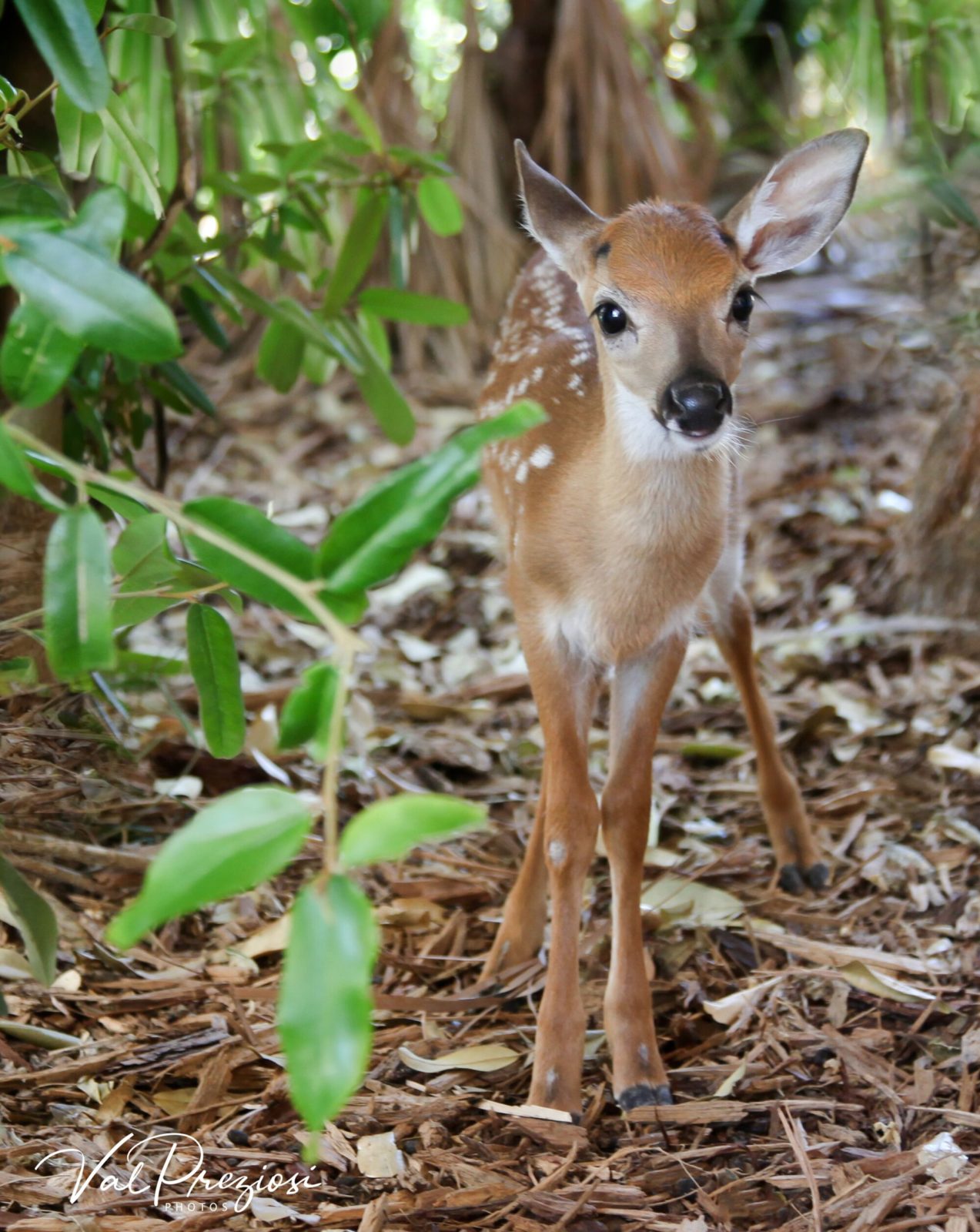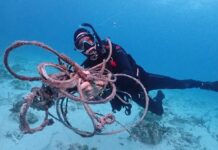
As federal protections for animals see further cuts from the Trump administration, a beloved local species may be the first to feel the aftershocks. The U.S. Fish and Wildlife Service (USFWS) announced last week that considerations are underway possibly to remove Key deer from the Endangered Species List.
The current plan includes Key deer on the “National Downlisting and Delisting Workplan,” a three-year process that comprises scientific studies on population, habitats, threats and the health of the herd; a petition to delist (if that decision is made in light of the information gathered); a 60-day period for public comment and review; and a final vote.
Ken Warrens, spokesperson for USFWS South Florida, said there is still opportunity for public engagement before the agency would consider moving forward with a delisting. The agency plans to update the existing Species Status Assessment, “a documented collection of all related science for a given species.” If that information leads to a delisting petition, there would be time for feedback. “We want to make sure the people who care about the species are able to comment,” said Warren.
But what do “downlisting” and “delisting” mean? Downlisting demotes a species from “endangered” to “threatened,” a lower level of federal protection. Delisting wholly eliminates a species’ endangered status. On paper, the intent of delisting/downlisting is to ensure a majority of resources are streamed to the most critically threatened populations. Unfortunately, there is a finite amount of federal funding allocated for conservation, which requires prioritization. The structure of the evaluation process is crumbling, though, under increasing budget cuts and the revision of the criteria.
The National Key Deer Refuge, an 8,542-acre preserve on Big Pine Key and No Name Key, and the only home in the world to Key deer, received notice on July 30 that Key deer would be included on the three-year plan. Less than two weeks later, on Aug. 12, the federal government announced critical changes to the application of the Endangered Species Act, making it easier to remove species from the list.
One change allows decisive power based on economic factors, meaning that habitats with lower revenues may find themselves on the chopping block based as much on fiduciary merit as on scientific or biological factors. Another critical change eliminates climate change as a factor in determining a species’ threat level. For a species that is entirely contained on a tiny speck of rock in the vast ocean though, the threat of encroaching waters, higher tides, beach erosion and increasingly dangerous storms is very real.
Unfortunately, a “three-year plan” doesn’t mean that the clock starts today and runs through 2022. 2019 is simply the date of the “proposed rule,” or the year that it was publicly listed in the Federal Register. For Key deer, the final decision is slated for fiscal year 2020. At that point the proposal will either pass or be withdrawn (based partially on public comment and review). If it passes, Key deer will be delisted, losing all protections that are engendered under the ESA.
Those skinny gams and doe eyes shouldn’t fool anyone though — Key deer are fighters. The population has hung on, clinging to life despite the odds. The species was nearly obliterated in the 1930s to ’50s due to overhunting, but bounced back thanks to legislative protections. More recently, Key deer survived a devastating screwworm epidemic, a major hurricane and the constant onslaught of vehicular traffic on U.S. 1.
The resilience of a species can only go so far without human intervention, though. If Key deer do lose their status, the onus will fall to citizens, volunteers and nonprofit groups, like Save Our Key Deer (SOKD), which was formed in 2016 by volunteers who worked with the U.S. Department of Agriculture to address the screwworm outbreak. The organization’s broader mission is “to advocate on behalf of the Florida Key deer population to ensure they receive ethical treatment and protection and to reduce human-caused illness, injury and death.” Even in the best circumstances, it’s a gargantuan task for a small organization to ensure the well-being of an entire species in perpetuity.

In a public statement released on Aug. 14, Valerie Preziosi, president of SOKD, denounced the latest ESA changes, citing the rhetoric on economic impact and climate change as “intentionally vague.”
“We should be noble enough to put survival of animal species over simple, selfish economic gain. In the Keys, this aspect seems trivial since other concerns have frozen land development expansion, the drastic loss of deer habitat has been well documented, and, if anything, the Key deer habitat section of the Keys is experiencing an economic downfall unrelated to the deer.” Preziosi sees the elimination of climate change as a qualifying factor for endangered status as equally detrimental. “‘Foreseeable future’ in the Keys means a much shorter time span than in a place like Arizona,” said Preziosi, “Our Key Deer were officially put on the Endangered Species list in 1967 and the major reason is linked to its very limited habitat range. And their habitat is shrinking. The edges of the fresh water lenses are becoming more contaminated with sea water and even the foliage on the peripheral edges have changed to more salt-tolerant plants unsuitable for Key deer food.”
No doubt, the metrics are incongruous. Whatever these latest studies reveal, Key deer have not crossed the finish line by any estimation. The removal of climate change and the addition of economic impact as deciding factors have falsely moved the finish line closer, allowing space for statistical shifts based on federal motivations, as opposed to quantifiable scientific research. It’s grading on a curve, at its most detrimental.
At this stage, individuals can still help steer the conversation by making their voices heard. Warrens encourages concerned citizens to present tangible observations, not just emotional appeals. “We need information that is scientific”, said Warrens, adding that Keys residents may want to share notes about traffic, habitat and other factors that are easily observed in their own backyards.
Fish and Wildlife Service Public Meeting
Marathon Government Center
2798 Overseas Hwy
Thursday, Aug. 22, 6 p.m.
National Key Deer Refuge Visitor Center
179 Key Deer Blvd.
Big Pine Key
open Monday-Saturday, 10 a.m. to 3 p.m.
Save Our Key Deer
saveourkeydeer.org
memberships start at $15
























